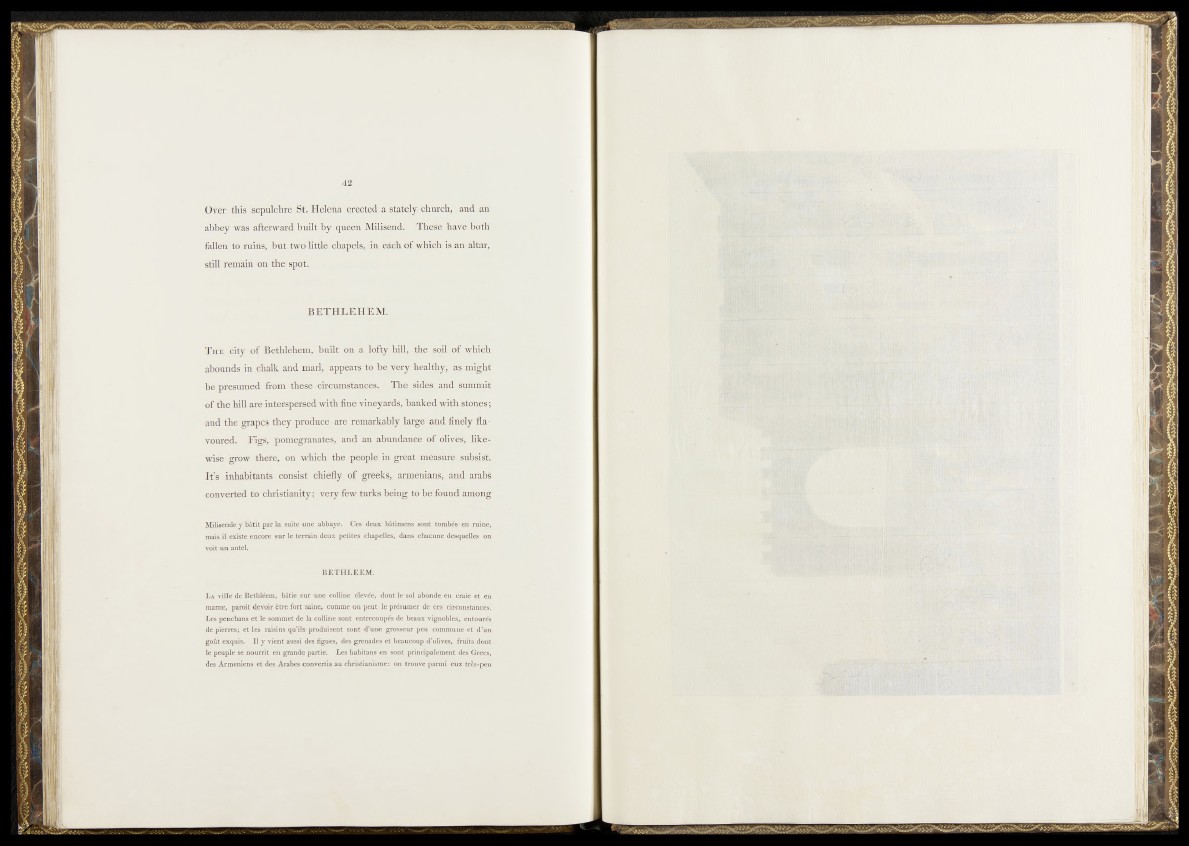
i l .
Over this sepulchre St. Helena erected a stately church, and an
abbey was afterward built by queen Milisend. These have both
fallen to ruins, but two little chapels, in each of which is an altar,
still remain on the spot.
BETHLEHEM.
T h e city of Bethlehem, built on a lofty hill, the soil of which
abounds in chalk and marl, appears to be very healthy, as might
be presumed from these circumstances. The sides and summit
of the hill are interspersed with fine vineyards, banked with stones ;
and the grapes they produce are remarkably large and finely flavoured.
Figs, pomegranates, and an abundance of olives, likewise
grow there, on which the people in great measure subsist.
It’s inhabitants consist chiefly of greeks, armenians, and arabs
converted to Christianity; very few turks being to be found among
Milisende y bâtit par la suite une abbaye. Ces deux bâtimens sont tombés en ruine,
mais il existe encore sur le terrain deux petites chapelles, dans chacune desquelles on
voit un autel.
BETHLEEM.
L a ville de Bethléem, bâtie sur une colline élevée, dont le sol abonde en craie et en
marne, paroît devoir être fort saine, comme on peut le présumer de ces circonstances.
Les penchans et le sommet de la colline sont entrecoupés de beaux vignobles, entourés
de pierres; et les raisins qu’ils produisent sont d’une grosseur peu commune et d’un
goût exquis. Il y vient aussi des figues, des grenades et beaucoup d’olives, fruits dont
le peuple se nourrit en grande partie. Les habitans en sont principalement des Grecs,
des Arméniens et des Arabes convertis au christianisme: on trouve parmi eux très-peu